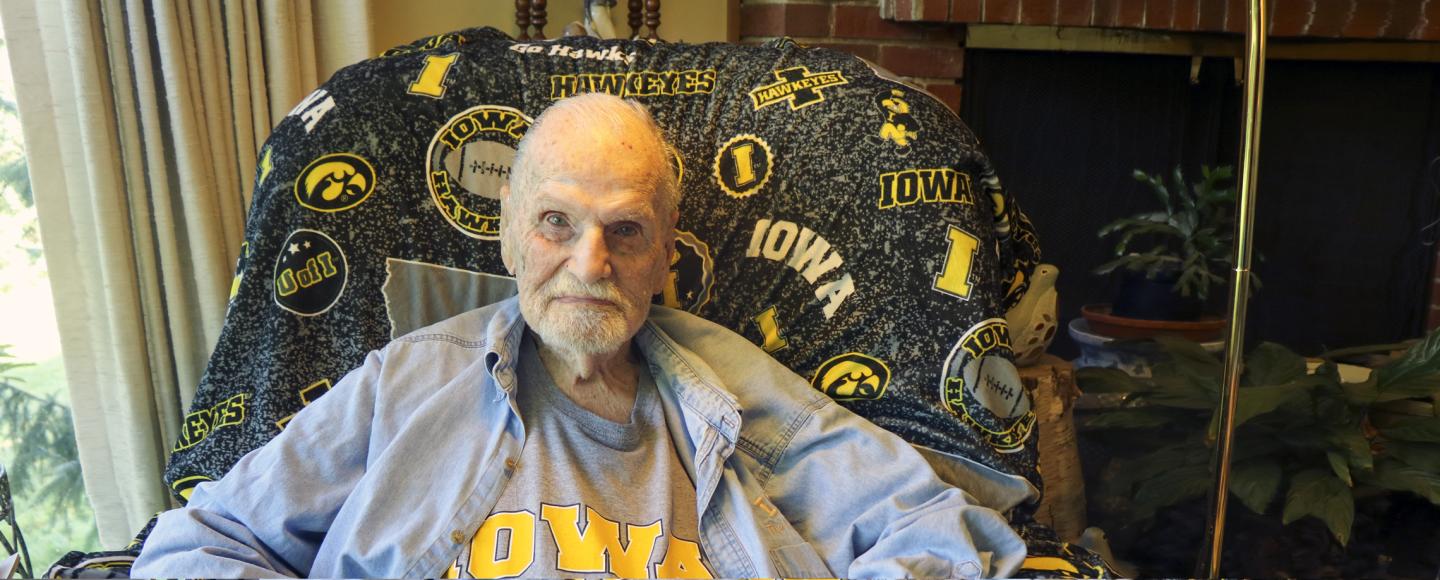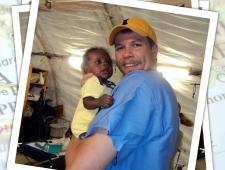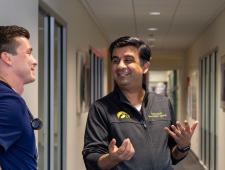Rufus Kruse: Practicing humanity in medicine around the globe
The Carver College of Medicine alumnus practiced internal medicine in Marshalltown for 35 years, becoming an integral member of the community with a reputation for providing thoughtful patient care.
Rufus Kruse (45MD) still wears his Navy-issued slacks, often with his favorite University of Iowa Carver College of Medicine t-shirt. When Kruse was born in Clinton County, Iowa, on May 8, 1921, he was destined to become the first doctor in a long family line of farmers
“My father was a farmer, but he always wished he was a doctor,” he says. "I fulfilled my father’s ambition.”
While he was in medical school at Iowa, the college and university participated in the Navy College Training Program, established to expedite technical training in order to provide the U.S. Navy with officers during World War II.
“We were an extra class,” Kruse says. “They sped us through medical school in the summers.”
The accelerated pace of the program made for a unique learning environment. Kruse remembers there were so many students in an anatomy lab at once that they installed large fans to deal with the overwhelming formaldehyde fumes.
At his 1945 commencement ceremony, he and about 15 of his classmates were also sworn into the Navy. The intent was for these students to become medical officers in the ongoing war, but the war ended only months later. Kruse was given the choice to go into a residency training program or continue his Navy career. He chose to do the latter.
Between 1945 and 1956, Kruse and his family moved across the U.S. He was first stationed at the Tucson VA Medical Center, where he recalls treating many cases of tuberculosis (TB).
“Then we saw the invention of streptomycin, and with it, the near eradication of TB,” he says.
Kruse had a sister diagnosed with TB when he was a boy, and she lived many years in a sanitorium. He recalls this as one of the more significant changes in medicine during his career.
Ensuing years moved the Kruse family to Long Beach Naval Hospital, San Diego, the Pearl Harbor Supply Center in Hawaii, and Great Lakes Naval Hospital. No matter where they moved, Kruse’s movie camera came with them. With that camera—a medical school graduation present from his parents—he filmed Presidents Eisenhower and Hoover, lava flows in Hawaii, and the testing of the first hydrogen bomb, for which he was on-site as a medical officer monitoring radiation exposure. That historic documentation is now a part of the National Archives.
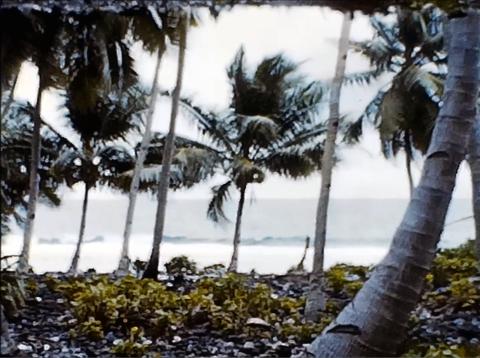
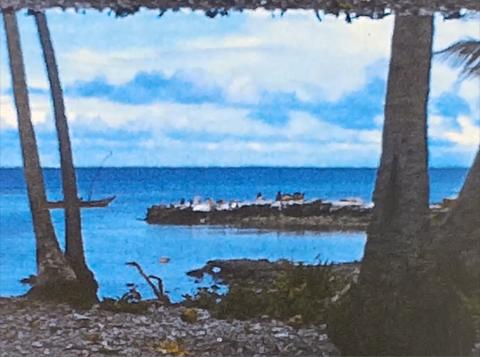
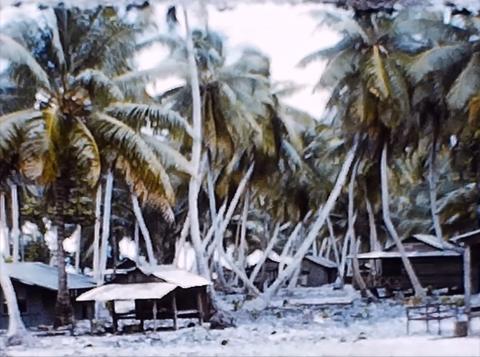
Returning to his roots
When Kruse decided it was time to specialize, he returned to Iowa and pursued internal medicine residency training at UI Hospitals & Clinics in 1956. Then he settled down in Marshalltown, Iowa, beginning a 35-year career serving that community.
He was known for taking his time speaking with and listening to each patient.
"Even when he stopped practicing, people would call him just to talk to him," says Kruse's daughter, Julie.
That relationship was built on Kruse’s unique abilities as a listener and confidant. He took care to speak with each of his patients not just about their symptoms, but also about their home life, work, family, and stressors. The depth of knowledge he developed about his patients made him especially skilled at making diagnoses.
“He once diagnosed a detached retina in the ER, without having to do any invasive tests,” Julie says. “One ophthalmologist in town said he was the only doctor he ever knew who could have done that.”
Kruse was also known to personally drive patients who needed specialty care to the UI Hospitals & Clinics campus.
“If they needed a smooth ride, I wanted to do it myself,” Kruse says.
Kruse’s dedication to his patients meant that he answered calls at all hours. If he was not at home, Dorothy would diligently call each medical facility where he visited patients in order to find him and relay the message. Kruse personally tended to all his patients if they were admitted to the hospital, since there were no hospitalists at the time. He also maintained a weekly schedule at the Cedar Rapids VA Clinic performing routine physicals
The Kruses took frequent family vacations, but Kruse always brought his medical bag, just in case. He also made stops along the route to check in on his medical school classmates across the country.
He was especially close with two Carver College of Medicine alumni, John Garland (45MD) and Bob Votteler (45MD, 51R). The three doctors not only graduated together, but they were also all born on the same date, and they all practiced in Marshalltown.
“They had season tickets to the Hawkeyes for decades,” Julie says. Kruse is the last surviving member of the group.
In 1991, Kruse retired in order to care for Dorothy, who was diagnosed with Alzheimer’s disease. He attended continuing education courses for several years after retirement purely out of interest, and he advises young physicians to find a similar passion for learning.
Now at age 101, he is among the oldest living alumni of the college and an example of the impact that physicians can make through dedicated, compassionate service to a community.
Kruse’s advice for a long life?
“Don’t smoke. That’s the one thing,” he says.
Photos submitted by Rufus Kruse.

Share your alumni story
Do you know an alumnus of the Carver College of Medicine with an interesting story? Contact our alumni relations team.

